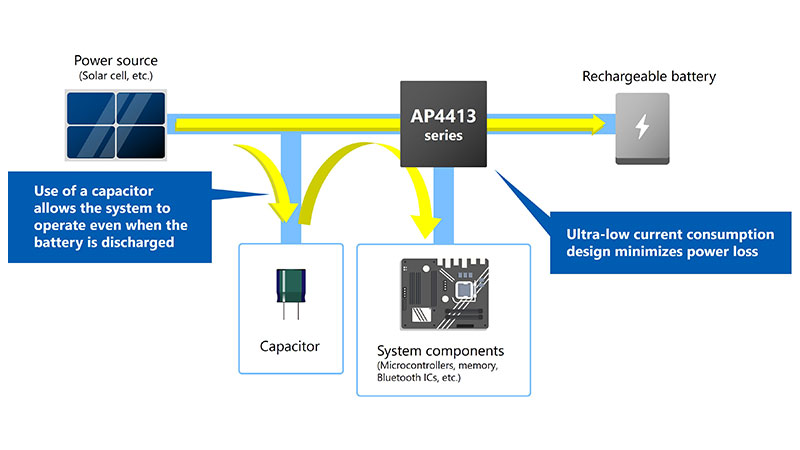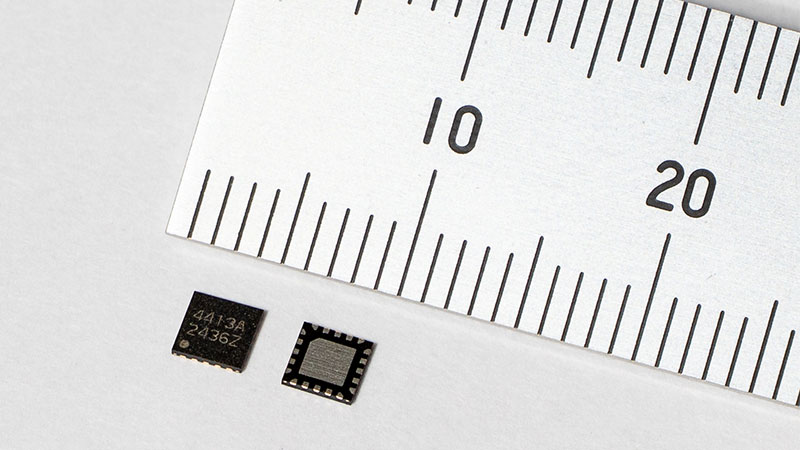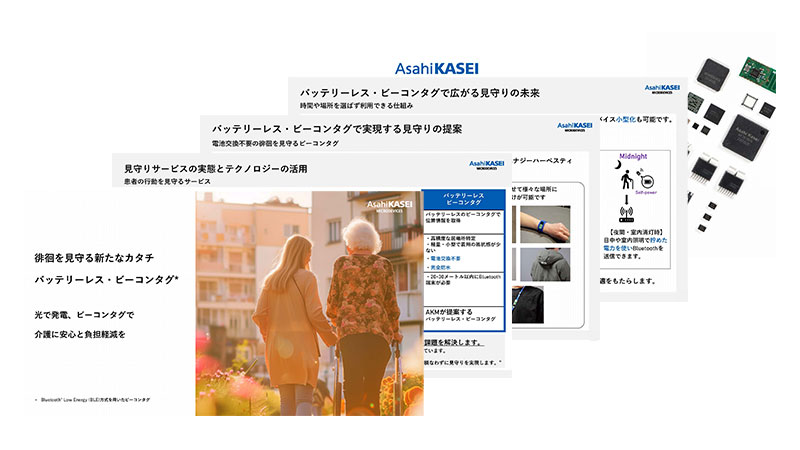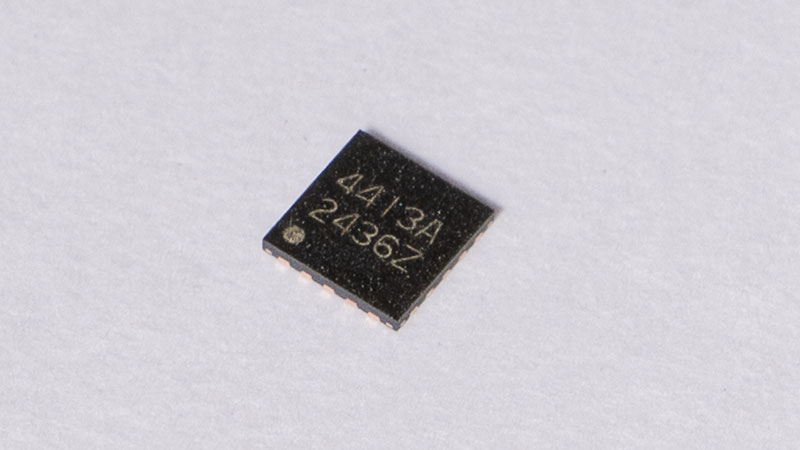News Release
- New Product Information -
[Notes] * Information on this page is current on the date of press release. * AKM is trademark of Asahi Kasei Microdevices Corporation in Japan, Europe and the United States. * Appellations, company names and product names on this page are trademarks or registered trademarks of respective companies.

New series of power management ICs for energy harvesting
Optimizing charge and discharge of rechargeable batteries in remote controls, IoT sensors, Bluetooth® trackers, etc.
2025/04/16
Overview
Tokyo, Novi, MI, and Düsseldorf, Germany – April 16, 2025 – Asahi Kasei Microdevices (AKM) has developed the AP4413, a new series of ultra-low current power management ICs (PMICs) ideal for battery charging systems used in energy harvesting1 applications.
The AP4413 series enables efficient battery charging while consuming an extremely low current of 52 nA and features four variants with voltage threshold characteristics matching several common rechargeable battery types. The AP4413 comes in a tiny 3.0 × 3.0 × 0.37 mm HXQFN package and has been in mass production since February of 2025.
AP4413 series of PMICs for energy harvesting
Equipped with AKM’s proprietary ultra-low current voltage monitoring system, the AP4413 series enables autonomous charging of a small rechargeable battery via energy harvesting, which is becoming increasingly common across a wide range of applications such as remote controls, Bluetooth® trackers, and IoT sensors, which have traditionally used disposable batteries.
This is particularly relevant in Europe, where the transition to rechargeable batteries is being promoted by Regulation (EU) 2023/1542 to evaluate the feasibility of phasing out disposable batteries.2
AKM has accumulated wide-ranging expertise in product technology and applications through the development and mass production of PMICs for energy harvesting. These devices allow system designers to utilize small amounts of ambient environmental energy, such as indoor light and body heat, to operate a variety of electronic devices, many of which are battery-operated. This is especially beneficial for IoT environmental sensors such as CO2 monitors that are installed in locations where line power is not easily accessible, and where battery replacement would be difficult.
Using energy harvesting to charge batteries is challenging, because the harvested voltage and current tend to be small and often unstable. It is therefore essential to minimize the PMIC’s power consumption and prevent excessive charging and discharging. The AP4413 series’ ultra-low 52 nA current consumption has minimal impact on a system’s power budget, and its voltage monitoring system prevents rechargeable batteries from becoming completely discharged, allowing for quick startup and/or recovery. Furthermore, the addition of an inline capacitor (see figure 2) allows the AP4413 series PMICs to support system operation even when the battery is completely discharged, while recharging it at the same time.
 Fig. 2 - AP4413 PMIC: System configuration example
Fig. 2 - AP4413 PMIC: System configuration example
1 Technology to convert small amounts of ambient energy into power, utilizing various forms of energy such as light, vibration, heat, and radio waves.
2 Regulation - 2023/1542 - EN - EUR-Lex
*Beacon Tag Using Bluetooth® Low Energy (BLE) Technology.
 Fig. 1 - AP4413 series of PMICs for energy harvesting
Fig. 1 - AP4413 series of PMICs for energy harvesting
Product Features
A lineup of four products with different overcharge and overdischarge voltage settings
By monitoring the voltage of the rechargeable battery, the AP4413 series prevents both overcharging and overdischarging. It includes four variants with different voltage threshold settings, enabling selection of the optimal device based on the characteristics of the battery.
Ultra-low power consumption design
With an ultra-low quiescent current of 52 nA (charging efficiency: 94.8% at 1 μA), the AP4413 series significantly reduces power loss and improves charging efficiency.
Dual operation using a capacitor
Until the rechargeable battery is sufficiently charged, the system temporarily stores energy in a capacitor. This allows both battery charging and system operation to be maintained simultaneously.
Applications
remote controls
Bluetooth® trackers
IoT sensors, etc.
Contact AKM
Inquiries about Energy Harvesting
To purchase a product or sample, ask technical questions about the product, request product information,
please fill in the following form and send it to us.











